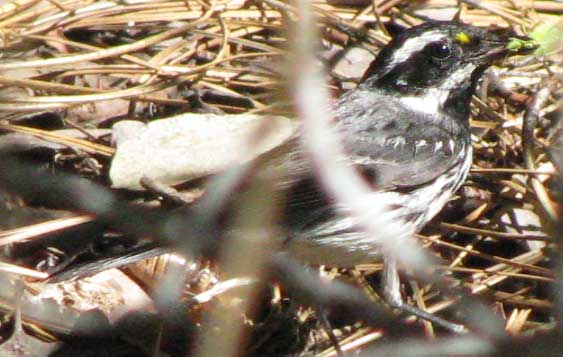Excerpts from Jim Conrad's
Naturalist Newsletter

from the the July 19, 2009 Newsletter, issued from the Siskiyou Mountains west of Grants Pass, Oregon:
A BUSY BLACK-THROATED GRAY WARBLER
So much nesting is taking place that it's easy to spot other bird parents of different species rushing about foraging for food, often so hectically that they're not taking the usual precautions of being extremely watchful for danger. That was the case this week as I passed a woods edge and heard a ruckus beside me inside a Madrone's stiff leaves. A Black-throated Gray Warbler, DENDROICA NIGRESCENS, was chasing a winged insect not at all interested in being eaten, and the insect kept getting away.
As I got my camera into position the wounded insect fell to the ground, the warbler fluttered downward after it, wings beating against dry leaves and twigs, and not seeming to notice me standing ten fee away. The moment the insect was subdued is shown above.
Warblers possess very slender, rather short beaks but the bird in the picture appears to have a massive, finch-like beak. Is it diseased, or tumorous? I have no idea what's going on here.
Black-throated Gray Warblers are a strictly Western species, nesting no farther east than Colorado and New Mexico. They overwinter spottily in southern California and Arizona, southward through Mexico. They look a lot like the East's Black-and-white Warblers but their gray, lightly striped backs differentiate them from that species. No similar warbler in our area bears the yellow spot before the eyes -- yellow lores -- but in the field that often goes unseen.
Black-throated Grays may be our most common warbler at woods edges and in the scrub around my trailer.